If you’re like most RVers, sooner or later you’ll have to replace your RV toilet. It’s an unpleasant job, but it’s one that can be done without too much trouble. In this article, we’ll walk you through the process step by step. We’ll answer some of the most common questions about how to replace an RV toilet, and we’ll give you some tips that will make the job go a little bit smoother. So read on, and learn everything you need to know about replacing your RV toilet!
Table of Contents
The Secrets To RV Toilet Replacement
Replacing an RV toilet is no easy task. It takes more than just a few basic tools and some elbow grease to do it right. If you’re not sure where to start, don’t worry! We’ve put together this comprehensive guide to walk you through the process step-by-step.
First and foremost, you’ll need to purchase the correct replacement toilet for your RV. Different models of RVs require different toilets, so make sure that yours will fit properly before making any purchases. You should also take into account how long the installation will take – most simple replacements can be done in an afternoon, but complex ones might require extra time and attention.
Once you have the correct replacement toilet, you’ll need to remove the old one.
Next, you’ll need to install your new toilet. Start by lining up the holes in the bottom of the bowl with those on your RV’s floor and attaching them using the appropriate screws. Once they’re securely fastened, you can attach the seat and lid if necessary. Finally, connect all of the plumbing lines and turn on your water supply – once everything is running smoothly, you’re ready to enjoy your new toilet!
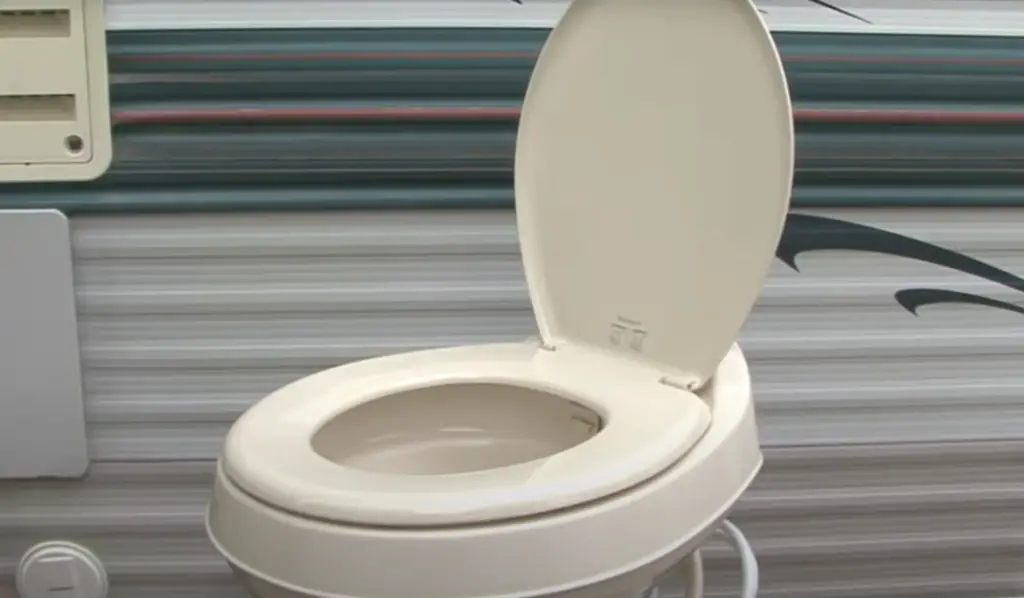
While this is a fairly straightforward process, there are still some potential pitfalls you should be aware of. Make sure that you follow all of the manufacturer’s instructions carefully and only use RV-approved materials to ensure a safe and effective installation. If you encounter any problems along the way, don’t hesitate to consult a professional for help.
Choose an RV toilet replacement
Before you can replace your RV toilet, you need to choose a new one. Make sure the toilet is the right size and shape for your space. It should also be an appropriate height so it’s comfortable to use. If you’re replacing a porcelain or china bowl, ensure the new model offers similar benefits like improved water flow and easy cleaning. You’ll also want an RV toilet that comes with all the necessary parts like a flange and sealant ring.
Replacing an RV toilet with a Marine toilet
If you’re looking for a more permanent solution, you may want to consider replacing your RV toilet with a marine toilet. Marine toilets are designed for use in recreational boats and RVs, and they can provide better performance than their standard counterparts. The installation process is similar to the one described above, but there are some key differences that should be considered when making this swap.
One of the biggest advantages of using a marine toilet is that it uses a sealant system instead of wax rings or gaskets to keep waste from leaking into the area below. This means that maintenance time is greatly reduced as any potential leaks will quickly be sealed off without having to remove anything or open up walls or floors to inspect them. Also, many marine toilets come with a built-in macerator pump, which makes it much easier to dispose of and recycle waste water.
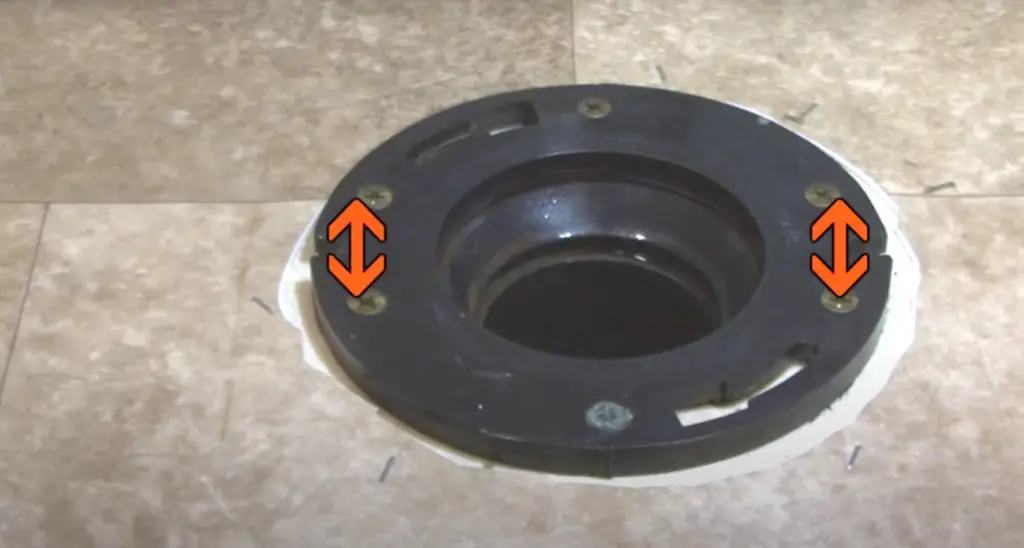
The downside of using a marine toilet is that they tend to be more expensive than their standard RV counterparts. Additionally, since they are designed for use in boats and RVs, there may be limited space available for installation depending on the size you choose. That being said, the improved performance they offer can make up for the higher cost.
Once that’s done, you should easily be able to install a new, high-performance marine toilet in your RV. Good luck!
Checking your vent as part of an RV toilet replacement
Once you have your parts ready to go, the next step is to check that your vent system is in good shape. This will help ensure proper ventilation and won’t interfere with the operation of your new toilet. Start by making sure there are no obstructions blocking airflow, such as leaves or debris. If there are any clogs, clear them out so they don’t cause a back-up when you turn on the water supply. [1]
Next, take a look at the RV’s plumbing. Inspect the pipes for corrosion or signs of wear and tear and replace any damaged sections before moving forward with the installation of your new RV toilet. Once everything looks good, it’s time to get started!
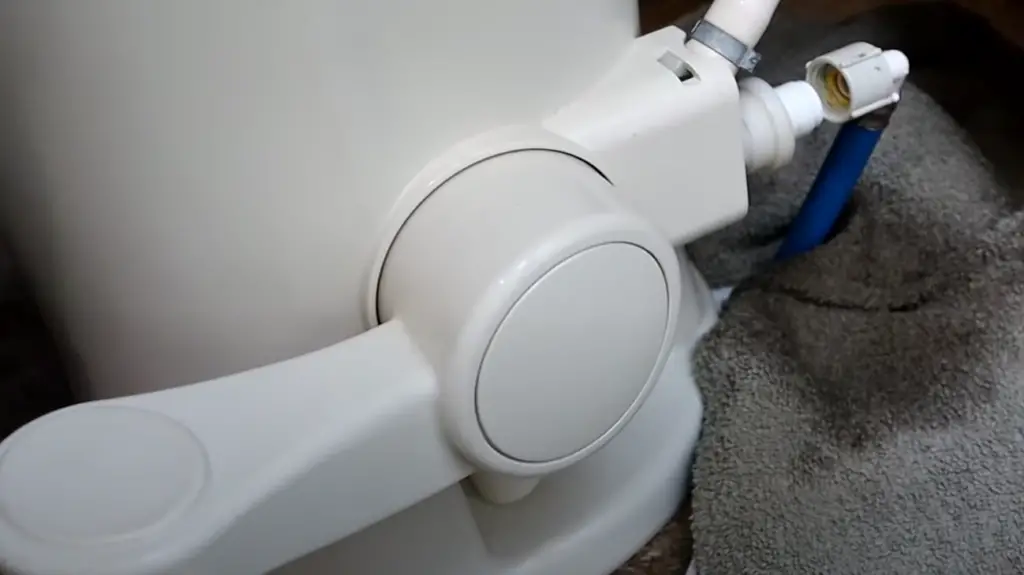
What Are the Parts of an RV Toilet?
When it comes to replacing an RV toilet, you first need to understand the different parts.
The main components of a standard RV toilet are:
- Bowl – This is the visible part that’s seen when you look at the toilet from the outside. It’s where the waste collects before being flushed out of the tank.
- Seat – The seat provides comfort and support for users.
- Flange – The flange attaches the toilet bowl to your RV flooring and seals off any gaps around it with silicone sealant or similar material.
- Tank – This holds water until it’s needed for flushing. It’s usually located underneath your toilet, inside your RV bathroom cabinet or in a nearby closet.
- Drain – This is where the water from the tank flows out to a waste water tank or into a designated spot in your RV.
- O-ring – The o-ring seals off the connection between the flush valve and the drain pipe, preventing any leaks.
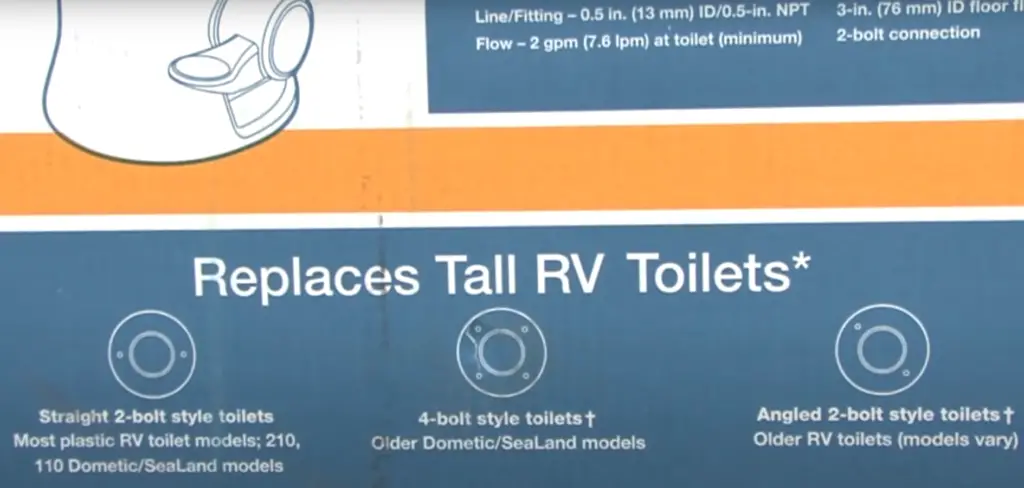
Gravity-Flush Toilet Type
Gravity-flush toilets are the most common type of RV toilet. This design relies on gravity to flush out the waste from the bowl into a tank hollowed below it.
The tank is filled with one or two gallons of water and has a lever attached to its side that users can pull when they flush the toilet. When this lever is pulled, it opens up a valve at the bottom of the tank, which releases the stored water down into the bowl. This pushes any solid waste down into an adjacent holding tank via a drain pipe connected to both tanks.
Seat and Cover
Once you’ve identified the type of toilet in your RV, you may need to replace the seat and cover. This is a relatively simple task that can usually be done in under an hour.
Start using a screwdriver or wrench to remove the screws holding the seat and lid. Then, use a putty knife to scrape off any sealant from around the flange.
Next, insert new bolts into the holes left behind by removing the old ones.
Once they’re in place, apply some silicone sealant around their base for extra protection against moisture.
Ball or Flapper Valve and Seal
The most common type of RV toilet uses either a ball or flapper valve and seal. If your toilet is equipped with one of these, you will need to replace it if there are any problems with the flush.
To do this, start by disconnecting the supply line from the tank. Then remove the old seal from inside the tank, being careful not to damage the sides. Finally, install a new seal in its place before reconnecting the supply line and testing out your toilet’s flush performance.
Water Valve
The water valve is what controls how much water is released into the bowl when the toilet is flushed. If your toilet doesn’t flush properly, this could be the problem.
To replace it, start by turning off your RV’s water supply before disconnecting the old valve from its housing. Then, connect a new valve in its place and turn on the water supply to test if it works as expected.
Floor Flange and Seal
The floor flange and seal are responsible for ensuring a waterproof connection between your toilet bowl and the RV flooring. If you find any leaks around your toilet, it’s likely that this is the cause.
To replace them, start by disconnecting the toilet from its mounting bolts and then removing the sealant around the base of the flange. Next, unscrew and remove the old flange before installing a new one in its place. Finally, apply some silicone sealant around it to make sure there are no gaps.
Replacing an RV toilet may seem like a daunting task at first, but with a bit of know-how it can be done relatively quickly and easily.
Macerating Toilet Type
This type of toilet uses a water pump to grind up your waste before flushing it into the sewer line. Because of this unique grinding mechanism, they are able to accommodate wider pipes and make installation easier. They also require less water than other types of toilets and have fewer problems with clogs or blockages. However, they do require electricity in order to operate, so keep that in mind when making your decision!
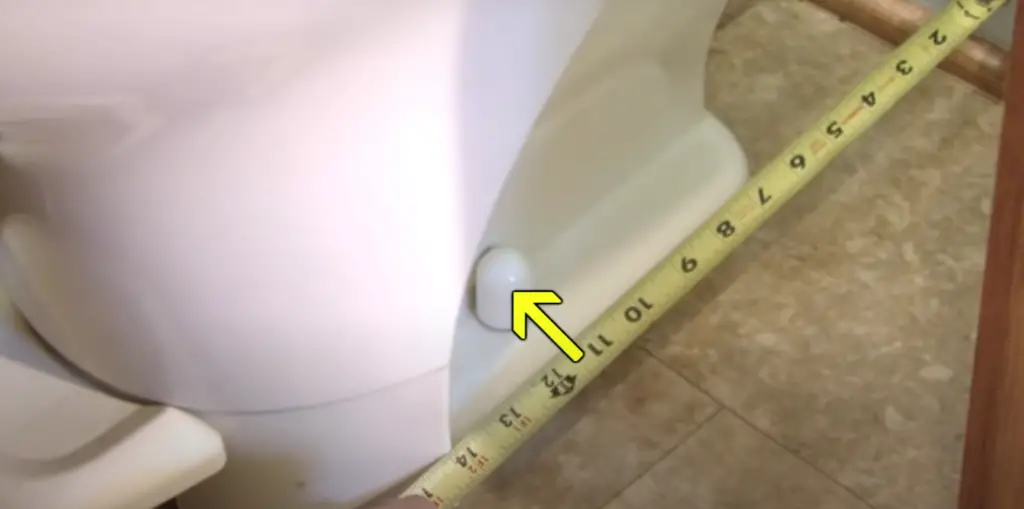
Macerating toilets come in two varieties: floor-mounted and wall-mounted. As their names suggest, one is installed on the floor and the other is installed on the wall. Both types can be used in an RV and have their own set of advantages and disadvantages.
Floor-mounted macerating toilets are typically easier to install because they don’t involve cutting into your RV walls. They also tend to be quieter than wall-mounted models, as there is less vibration due to the pump being separated from the toilet bowl. On the downside, they do take up a bit more floor space than wall-mounted toilets, which can be an issue if you’re trying to maximize every inch of your RV’s interior.
Wall-mounted macerating toilets, on the other hand, are great if you’re looking to save some space in your RV bathroom. They are also easier to access for maintenance and repairs, since you don’t have to bend down to reach them. However, they require more advanced installation due to the need to cut into your RV walls in order to install the pump and other components.
Seat and Cover
When it comes to toilet seats and covers, there are two main types: round and elongated. Round seats and covers are typically more compact in size, so they’re great for saving space in your RV bathroom. Elongated seats and covers provide a bit more room for comfort but can take up more space than round models.
No matter what type of seat or cover you choose, make sure to find one that fits securely onto your new RV toilet. Most come with adjustable hinges and other features that help ensure the perfect fit. Additionally, many models now offer slow-close lids so you don’t have to worry about slamming the lid down after each use!
Once you’ve decided on the right macerating toilet and seat/cover combo, it’s time to get started with the installation process.
Internal Plumbing and Macerator Pump
Before installing your toilet, you’ll need to make sure that your RV’s internal plumbing is up to the task. A macerating toilet requires a larger-diameter sewer pipe than other types of toilets, so if you don’t already have one in place, you may need to install one before continuing.
Once your pipes are ready for installation, it’s time to move on to the macerator pump. This is a necessary component for operating a macerating toilet and must be installed prior to connecting the rest of the system. The pump should include detailed instructions on how and where it should be installed in order for it to operate properly and safely.
Water Control Valve
Once the macerator pump is in place, the next step is to install the water control valve. This valve controls the flow of water from your RV’s water supply into the toilet bowl and helps regulate flushing performance. It should be installed according to manufacturer instructions and only after all other components have been connected.
Control Panel
The last step of the installation process is to install the control panel. This is where you can adjust water pressure and other settings for things like bowl fill time, flush speed, and more. The control panel should be installed in a location that’s accessible but not prone to moisture or humidity from your RV’s shower or sink area.
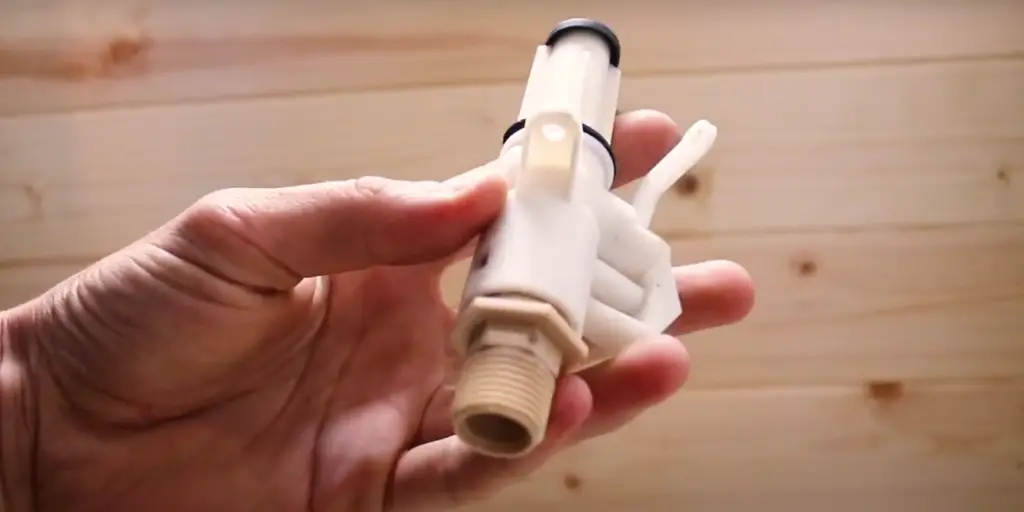
Tank Sensors
Finally, tank sensors should be installed to measure the level of waste in your RV’s holding tank. This helps ensure that your macerating toilet is flushing properly and not accumulating excess waste. Tanks sensors are usually mounted on the bottom or side of the tank and can be connected to a display panel inside your RV for easy monitoring.
Now that all the components have been installed and tested, you’re ready to enjoy your new RV toilet! With proper installation and maintenance, it should provide years of hassle-free operation. So sit back, relax, and enjoy the convenience of having an efficient macerating toilet in your RV.
How Do You Fix an RV Toilet?
The process of fixing an RV toilet can be broken down into four steps: inspection, diagnosis, repair, and reinstallation.
Inspection
The first step in fixing your RV’s toilet is to do a thorough inspection. You should look for any signs of damage or deterioration. If you find any cracks or holes in the porcelain, it’s best to replace the entire unit rather than attempting to repair it.
Finally, thoroughly check all hoses and connections that the toilet will be connected to. Make sure these connections are properly sealed and not leaking.
Diagnosis
Once you’ve completed your inspection, it’s time to diagnose the cause of the problem. If the porcelain is cracked, there is no point attempting to repair it and you should move on to replacing the entire toilet. But if all other components seem to be intact and in good condition, then you can focus on repairing what needs to be fixed.
If the seal between your tank and bowl is faulty or broken, try replacing it with a new one. You may also need to replace some of the fittings that attach this seal to the toilet base if they have corroded or worn out over time.
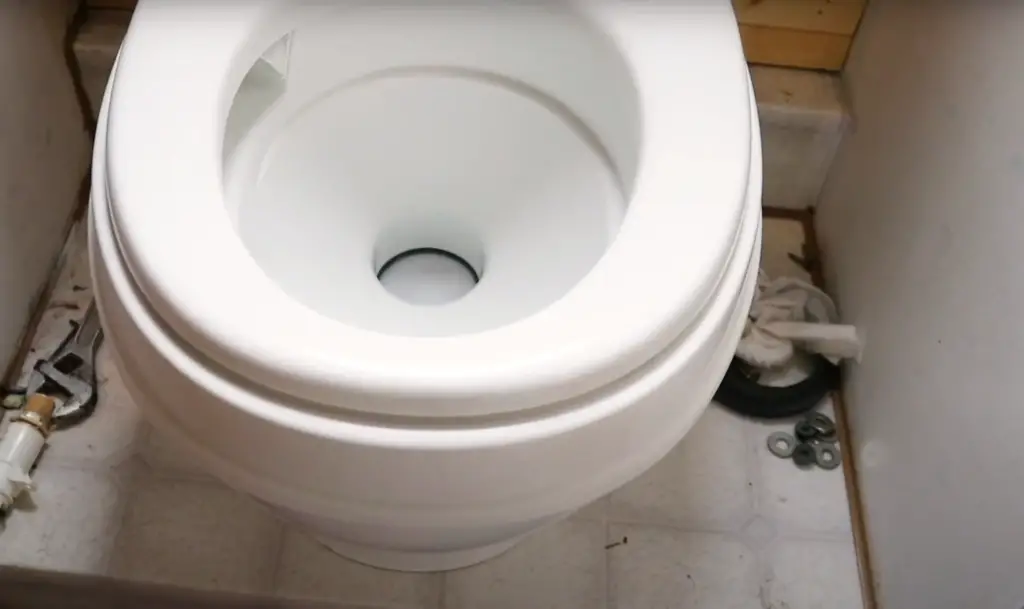
If the hoses have been damaged, you can either replace them with new ones or try to repair them using sealant or epoxy.
Repair
Once you’ve diagnosed and identified what needs to be repaired, it’s time to start the actual repair process. If you are replacing seals or fittings, make sure to properly clean and dry the surfaces before applying any new sealant or adhesives.
If you are repairing hoses, use a heat gun on low heat to loosen up any hardening sealants that may be clogging up the hose connections. Then apply a generous amount of new sealant around each connection point to ensure a watertight seal.
Reinstallation
Once all repairs have been completed, it’s time to reinstall the toilet in your RV. Make sure to properly align the tank and bowl seals with each other before turning on the water supply.
It is also important to make sure that all connections are properly sealed and not leaking before turning on the water supply. Once everything is securely in place, turn on the water supply and flush your new toilet several times to test its functionality.
How Do You Change a Water Valve on an RV Toilet?
If your RV toilet is leaking, the first place to check is the water valve. If you’ve never changed a water valve before, it can seem intimidating, but it’s actually quite easy. Here is how to replace an RV toilet water valve:
- To prevent damage to your RV, make sure you turn off the main water supply and switch off the electricity powering your tankless electric water heater (if applicable).
- Remove the toilet lid and unscrew the plastic nut that holds the ballcock assembly in place on top of the toilet tank. Carefully take out the entire ballcock assembly and lay it aside.
- Disconnect any hoses or wires attached to your old water valve by using a wrench.
- Use a putty knife to scrape off any old putty and then use a wire brush to get rid of any remaining debris or corrosion on the threaded part of the water valve.
- Apply some plumbers’ silicone sealant onto the threads of your new water valve, then screw it into place on the toilet tank. Make sure it’s tight so there are no leaks.
- Reconnect all hoses or wires that you removed from your old water valve and then reattach the ballcock assembly to the top of the toilet tank with its plastic nut.
- Turn back on the main water supply for your RV, as well as the power source for your tankless electric water heater (if applicable).
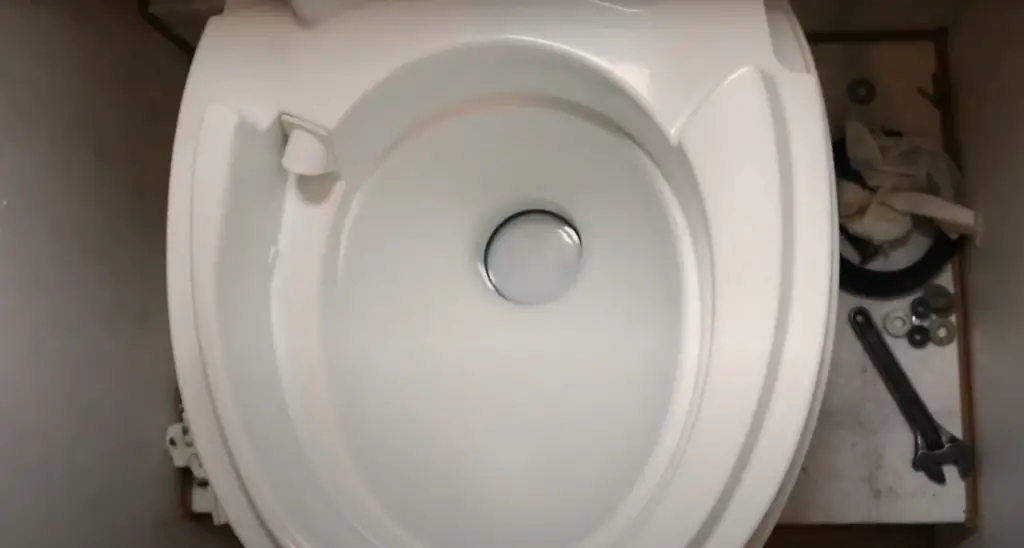
How Do You Replace a Toilet Flange on an RV?
Replacing a toilet flange on an RV can be a bit tricky because of the limited space. But with some patience and the right tools, it’s a job that the average person can do. Here are the steps to replace your RV toilet flange:
- Remove the old flange: Start by taking out all the bolts that connect your toilet to the floor with an adjustable wrench or socket wrench. Loosen them one by one until they come off completely.
- Install new wax ring: Now take out your new wax ring and press it onto the base of your toilet where you removed all the bolts from earlier. Make sure it is secure and free from any air bubbles before you move on to the next step.
- Reinstall toilet: Carefully place the toilet atop the wax ring and secure each bolt sequentially with a socket or adjustable wrench. Tighten them all to make sure they are secure.
- Install new flange: Take your new flange and line it up with the holes on the floor where you removed all the bolts earlier. Screw in each bolt one by one until they are nice and tight. Test it out to make sure it is secure to ensure that no leakage will occur when you use your RV’s toilet again!
And there you have it, replacing a toilet flange on an RV isn’t as hard as you might think!
How Do I Fix the Ball or Flapper Valve on My RV Toilet?
The ball or flapper valve is what keeps the water from draining out of the tank when not in use. When this valve becomes worn, it can cause your RV toilet to leak and even to overflow. To replace the ball or flapper valve, you will need a replacement part that fits your RV’s make and model.
First, turn off the main water supply line to your RV and flush the toilet until all the water has been emptied from the tank. Once this is done, locate the screws holding down the plastic cap at the bottom center of your toilet bowl. Unscrew these and remove them carefully so as not to damage anything inside.

You should now be able to see the inside of your toilet tank. Locate the ball or flapper valve and remove it carefully. Take your replacement part and fit it into a place where the old one was, making sure to check for any leaks.
Once everything is in place, reattach the plastic cap with the screws you removed earlier. You can now turn on your main water supply line again and test out your new valve – no more leaking or overflowing! Now that you know how to fix a ball or flapper valve on an RV toilet, you can enjoy all those road trips without worrying about any plumbing mishaps.
How Do I Repair a Macerator Toilet Pump?
Macerator toilet pumps are a common type of RV toilet. They use a device to grind up waste for easy disposal. If the pump stops working, it may need repair or replacement. The good news is that macerators are relatively simple machines and can be repaired without requiring extensive training or experience.
The first step in repairing a macerator pump is to determine if it needs to be replaced or repaired. You can do this by checking the motor and other components for wear and tear, as well as looking at old parts that may have become damaged over time. If the parts appear to be in good condition, then you may only need to replace a few small broken pieces or worn out seals in order to get the pump back in working order.
If the pump needs to be replaced, make sure you get a model that is compatible with your RV’s plumbing system. Some macerator pumps are made for specific types of toilets, so double check to make sure you’re getting the right one. Once you have the new pump in hand, start by disconnecting the power supply and any plumbing lines that may be connected. You can then remove the existing pump from its housing and install the new one according to the manufacturer’s instructions.
To finish up, turn on your power source and test out your new macerator pump to make sure it’s working properly. If all goes well, you should be able to enjoy your new and improved RV toilet in no time.
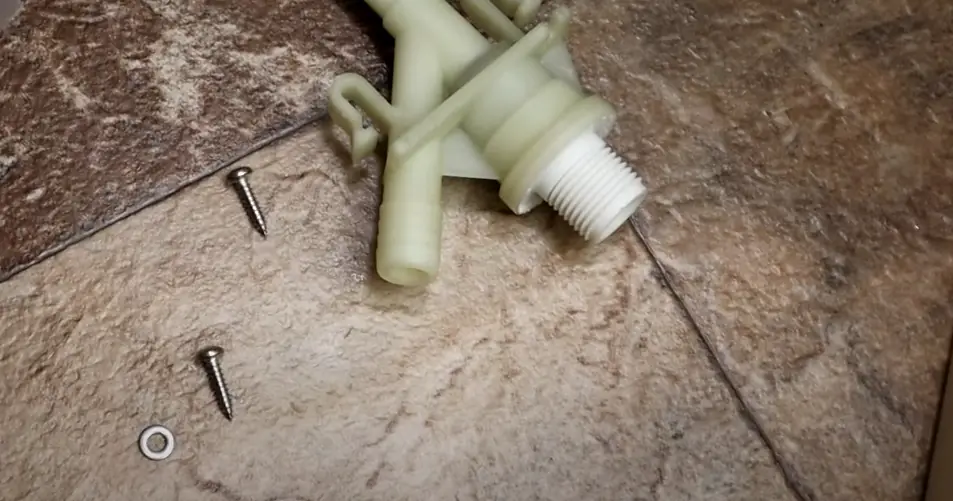
Is Fixing an RV Toilet on My Own Worth It?
The answer to this question depends on your level of experience, the time you have available and if you are able to find all the necessary materials. If you haven’t done any plumbing work before, it may be best to seek help from a professional. On the other hand, if you take your time and read up on basic plumbing principles, replacing an RV toilet is often a straightforward process. Ultimately, it is important to decide what works best for you in terms of money, skill level and time available. [2]
FAQ
How do you replace an old RV toilet?
Replacing an old RV toilet is not a difficult process, but it requires some basic knowledge of plumbing. Before you start, make sure your new toilet is the correct size and fits into the space in your RV. You’ll need to drain the existing tank and disconnect any water lines connected to the old toilet. Once the tank, flush valve, and gaskets are removed from the existing toilet, take off all remaining connections by unscrewing them with a wrench or pliers. Next, remove the mounting bolts that secure the base plate of your RV toilet to the floor.
Once you have removed all parts of your old RV toilet, you can begin replacing it with your new one. Start by attaching any necessary water lines to your new RV toilet. Use the plumber’s tape on the threads of the connectors to ensure a tight seal. Make sure all connections are secure before moving on to the next step.
Next, you’ll need to attach the mounting bolts that secure the base plate of your RV toilet to the floor. After you’ve done this, add a wax ring around the opening in your RV floor and press down firmly on your new toilet until it is properly secured with no gaps between it and the floor. [3]
Once you have installed your new RV toilet, you can begin connecting its components such as flush valves and tanks. Make sure all nuts and bolts are tightened securely before testing out your replacement toilet by running some water into the tank and flushing it. If everything is working properly, you’re all set!
Is it hard to replace an RV toilet?
Replacing an RV toilet is not as hard as it sounds. It’s a fairly straightforward process, although there are a few things to keep in mind.
First off, make sure your replacement toilet fits inside the existing space of your RV. Most standard-sized units should fit, but always measure first to be sure. Once you have the right size toilet, installation is pretty easy – just follow the steps below!
- Begin by turning off the water supply and emptying any remaining water from the tank. Disconnect all hoses from the old toilet and unscrew it from its mounting plate or floor flange.
- Clean up any mess around the area where you removed the old toilet.
- Place the new RV toilet into its mounting plate or floor flange and screw it in place, making sure it’s secure.
- Connect the water supply lines to the new toilet, making sure they are properly tightened.
- If needed, attach a wax ring seal to the bottom of the new toilet and press it firmly into place on the mounting plate or floor flange. This will help create a tight seal which prevents leaks and seepage from occurring.
- Re-attach all of your hoses (such as those for flushing) to the back of the new toilet tank and make sure they are securely connected. Then turn on the water supply and make sure it works.
- Last but not least, test out your newly installed RV toilet to make sure everything is working properly. Flush and check for any leaks or seepage around the area where you installed the new toilet.
If all goes well, you should have a fully functional RV toilet in no time! With a few simple steps, replacing an RV toilet can be relatively easy and hassle-free. Just remember to measure beforehand, clean up your work space before beginning installation, and always double check that everything is connected securely before testing out your new unit.
Are all RV toilets interchangeable?
Not necessarily. It is important to know the dimensions and size of your current toilet before you buy a new one, as they do come in different sizes. Many toilets are one-piece units, so it can be difficult to find an exact replacement if the measurements don’t match up exactly. To avoid any potential problems with fitting and installation, measure your current toilet carefully before you purchase a new one. [4]
Can I replace my RV toilet with any RV toilet?
When it comes to replacing your RV toilet, you’ll want to make sure that the new toilet is compatible with your RV’s bathroom layout. You should measure the space where the old toilet was installed and compare this to the dimensions of the new model before you buy, as well as check that any necessary accessories or fittings are included in the purchase.
This will ensure it fits correctly and offers all of the features required for a safe and comfortable installation in your RV.
It’s also important to consider how many people will be using the toilet at once; if multiple people will be using it, look into getting a model designed for durability and high-volume capacity, as this will ensure that it won’t break down or clog easily. Also, weigh up the options when it comes to flushing mechanisms; while older models usually use water tanks with manual pumps, newer designs may feature electronic controls or even dual-flush systems. [5]
Finally, you should pay attention to the warranty provided by your chosen toilet model. A good quality RV toilet should come with some form of warranty that covers parts and labour costs in case of any issues during installation and operation. This can offer peace of mind knowing that if something does go wrong, you’ll have the necessary coverage to get it fixed quickly and without too much hassle.
Useful Video: How To Replace an RV Toilet
Conclusion
Replacing an RV toilet may seem like a daunting task, but with the right tools and knowledge it can be done relatively easily. It is important to take your time and follow safety precautions when installing or removing any part of your RV’s plumbing system. Make sure to research the specifics of your particular model before you begin and always double-check all connections for leaks before re-filling your tank with water. Taking the extra time to properly complete this job will help keep your RV in top condition for years to come!
References
- https://rvshare.com/blog/rv_toilet_replacement/
- https://www.mortonsonthemove.com/rv-toilet-parts/
- https://harvesthosts.com/rv-camping/upgrading-replacing-rv-toilet/
- https://mycamperfriend.com/are-rv-toilets-universal/
- https://www.jeffsetter.com/can-you-replace-an-rv-toilet-with-a-regular-toilet/

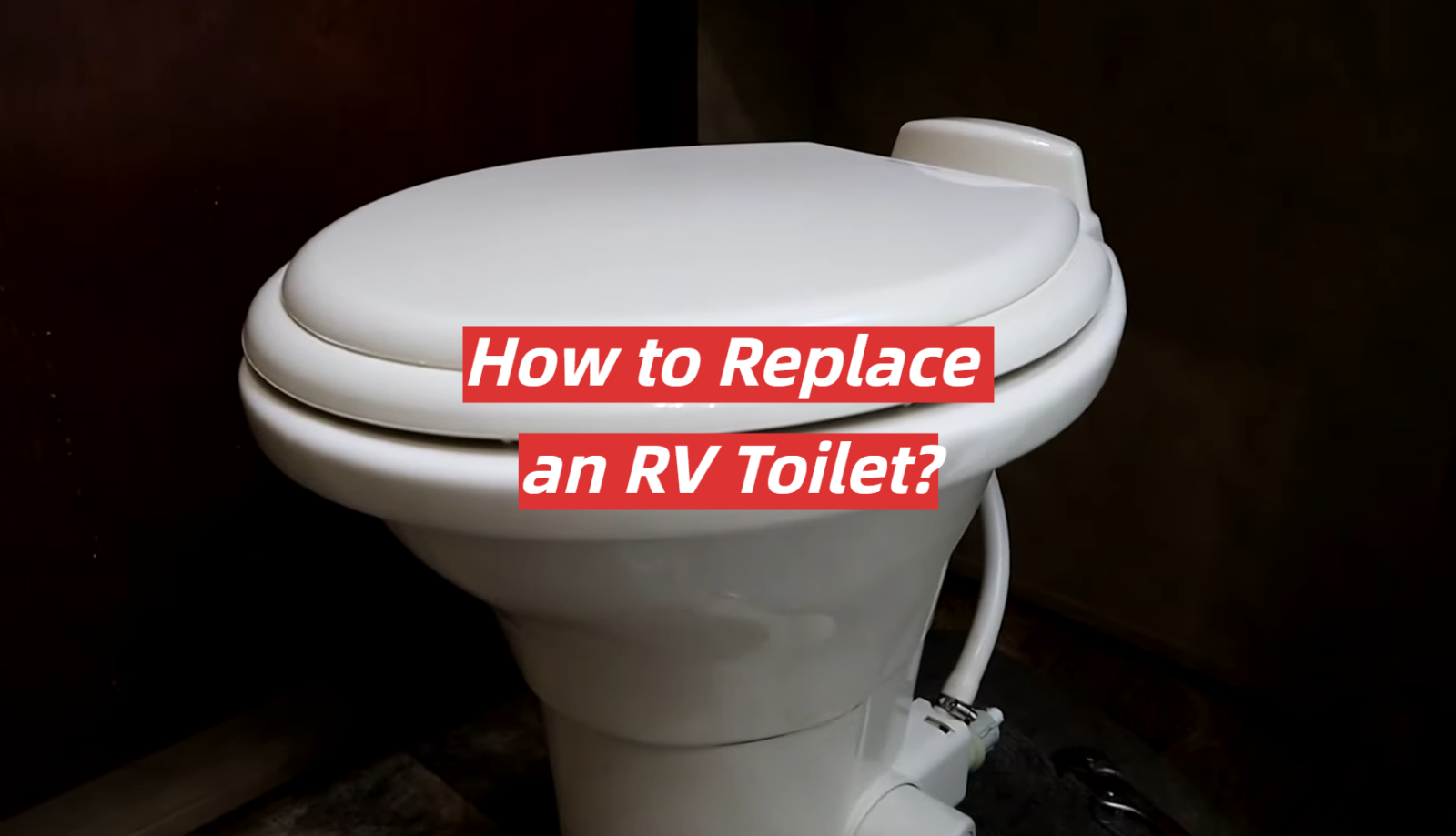
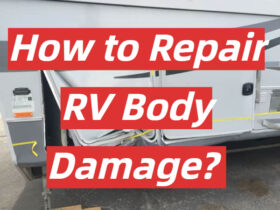
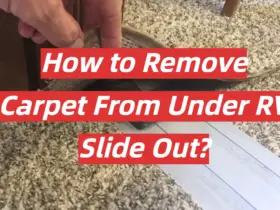

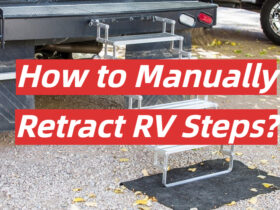
Leave a Reply